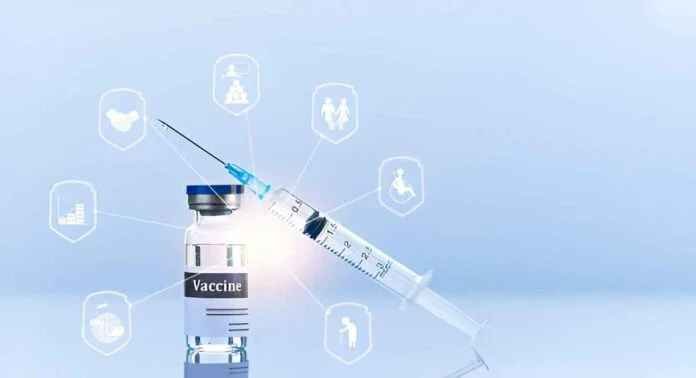Influenza, commonly known as the flu, has been a perennial challenge in public health due to its ability to mutate rapidly, leading to frequent changes in vaccine composition. However, recent technological advances have significantly improved flu vaccines, making them more effective and accessible than ever before. In this comprehensive guide, we will delve into the cutting-edge innovations that have propelled flu vaccines to the apex of improvement, exploring advancements in vaccine development, delivery methods, distribution networks, and public health strategies.
Understanding Influenza Vaccines Basics
Before delving into technological advancements, it’s crucial to grasp the basics of influenza and how vaccines work. Influenza is a contagious respiratory illness caused by influenza viruses, primarily Types A and B. These viruses mutate frequently, leading to seasonal outbreaks and occasional pandemics.
Vaccines are the cornerstone of influenza prevention. Traditional flu vaccines contain inactivated or weakened viruses, prompting the immune system to produce antibodies that protect against infection. However, the effectiveness of traditional vaccines can vary due to viral mutations and individual immune responses.
Advancements in Vaccine Development
- a. Next-Generation Vaccines: i. mRNA Vaccines: The emergence of mRNA vaccine technology, exemplified by the success of COVID-19 vaccines, has revolutionized flu vaccine development. mRNA vaccines offer rapid production, scalability, and potential for strain-specific customization, enhancing flu vaccine efficacy. ii. Recombinant Vaccines: Recombinant DNA technology allows for the production of flu vaccines without the need for egg-based culturing, addressing issues of egg allergies and production limitations. Recombinant vaccines offer improved safety profiles and streamlined manufacturing processes.
b. Universal Vaccines:
i. Epitope-Based Vaccines: Targeting conserved epitopes across various flu strains, epitope-based vaccines aim for broader protection against diverse influenza viruses. Advances in bioinformatics and structural biology have facilitated the design of epitope-focused vaccines with enhanced cross-reactivity. ii. Nanoparticle Vaccines: Nanotechnology-enabled vaccines utilize nanoparticles to deliver antigenic components more efficiently, stimulating robust immune responses. Nanoparticle-based flu vaccines hold promise for achieving broader and longer-lasting immunity.
Enhanced Delivery Methods
- a. Intranasal Vaccines: i. Live Attenuated Vaccines: Intranasal administration of live attenuated vaccines mimics natural infection routes, eliciting strong mucosal and systemic immune responses. Improved formulation and delivery technologies have enhanced the safety and efficacy of intranasal flu vaccines. ii. Adjuvanted Formulations: Incorporating adjuvants into intranasal vaccines enhances immunogenicity, promoting broader protection and dose-sparing effects. Adjuvanted intranasal vaccines show potential for improving vaccine coverage and compliance.
b. Microneedle Patches: i. Pain-Free Administration: Microneedle patches offer painless and convenient vaccine delivery, especially beneficial for pediatric and needle-phobic populations. These patches utilize dissolvable microneedles to deliver vaccine antigens into the skin’s immune-rich layers, eliciting robust immune responses.
Strengthening Distribution Networks
- a. Cold Chain Innovations: i. Freeze-Drying Technology: Freeze-drying (lyophilization) of vaccines enhances stability and shelf life, reducing dependency on continuous refrigeration. Lyophilized flu vaccines enable easier storage, transport, and distribution, especially in resource-limited settings or during emergencies. ii. Thermal Stability Enhancers: Novel additives and formulations improve vaccine stability at higher temperatures, mitigating cold chain disruptions and vaccine wastage. Thermal stability enhancers enhance vaccine accessibility and reliability in diverse environmental conditions.
b. Digital Tracking and Monitoring: i. Blockchain Solutions: Blockchain technology facilitates secure and transparent tracking of vaccine supply chains, reducing counterfeit products and ensuring quality control. Digital platforms enable real-time monitoring of vaccine distribution, optimizing inventory management and reducing logistical challenges. ii. IoT Integration: Internet of Things (IoT) devices such as temperature sensors and GPS trackers provide real-time data on vaccine storage conditions and transportation routes. IoT integration enhances vaccine safety and efficacy by preventing exposure to suboptimal storage conditions.
Innovative Public Health Strategies
- a. Surveillance and Prediction Models: i. Big Data Analytics: Leveraging big data analytics and machine learning algorithms, public health agencies can forecast flu outbreaks, monitor vaccine effectiveness, and optimize vaccination campaigns. Predictive models enhance preparedness and response capabilities, minimizing the impact of seasonal flu waves. ii. Syndromic Surveillance: Syndromic surveillance systems track flu-like illness patterns in real time, enabling early detection of outbreaks and targeted interventions. Integrating syndromic data with vaccination records improves disease surveillance and public health decision-making.
b. Community Engagement Initiatives:
i. Mobile Vaccination Units: Mobile vaccination units bring flu vaccines directly to communities, addressing barriers such as transportation and access to healthcare facilities. Mobile outreach programs improve vaccine equity and coverage, particularly in underserved or remote areas. ii. Vaccine Awareness Campaigns: Education and awareness campaigns promote flu vaccination benefits, dispel myths, and encourage vaccine uptake among diverse populations. Culturally tailored messaging and outreach efforts foster trust and engagement, enhancing public acceptance of flu vaccines.
Conclusion The journey of influenza vaccines from traditional formulations to cutting-edge innovations represents a paradigm shift in public health strategies. Technological advances in vaccine development, delivery methods, distribution networks, and public health initiatives have collectively propelled flu vaccines to new heights of efficacy, accessibility, and global impact. Embracing these advancements and fostering collaboration among stakeholders will be instrumental in mitigating influenza’s burden and safeguarding public health in the years to come.





